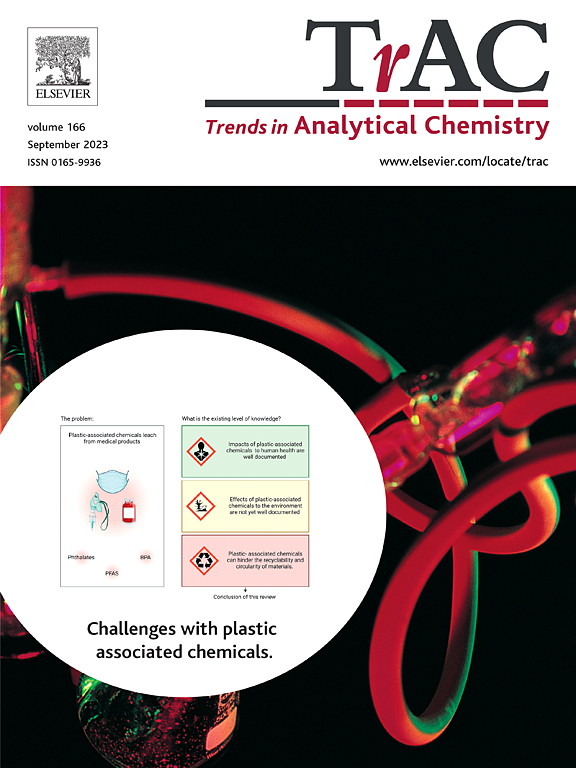Two-dimensional nanomaterials-based optical biosensors empowered by machine learning for intelligent diagnosis
IF 11.8
1区 化学
Q1 CHEMISTRY, ANALYTICAL
引用次数: 0
Abstract
Artificial intelligence techniques based on machine learning (ML) are prevalent in healthcare for disease diagnosis, drug discovery, and patient risk identification. Two-dimensional nanomaterials (2DMs)-based optical biosensors have received extensive attention because of their high sensitivity, easy operation and fast response. Recent advances have been achieved for 2DMs-based optical biosensors empowered by ML algorithms for intelligent diagnosis. In this review, we present a comprehensive summary about ML algorithms-assisted 2DMs-based optical biosensors for intelligent diagnosis. We first introduce basic principles of ML algorithms and describe the advantages of 2DMs as sensing materials in optical biosensors. Then, we summarize the recent development of ML-assisted 2DMs-based optical biosensors, particularly focusing on fluorescence biosensors, colorimetric biosensors, and Raman biosensors. Rational selections of ML algorithms are recommended based on the forms of the biosensor data and target analytes. It ends by listing the current challenges and proposing future trends of ML-assisted 2DMs-based optical biosensors for intelligent diagnosis.

求助全文
约1分钟内获得全文
求助全文
来源期刊

Trends in Analytical Chemistry
化学-分析化学
CiteScore
20.00
自引率
4.60%
发文量
257
审稿时长
3.4 months
期刊介绍:
TrAC publishes succinct and critical overviews of recent advancements in analytical chemistry, designed to assist analytical chemists and other users of analytical techniques. These reviews offer excellent, up-to-date, and timely coverage of various topics within analytical chemistry. Encompassing areas such as analytical instrumentation, biomedical analysis, biomolecular analysis, biosensors, chemical analysis, chemometrics, clinical chemistry, drug discovery, environmental analysis and monitoring, food analysis, forensic science, laboratory automation, materials science, metabolomics, pesticide-residue analysis, pharmaceutical analysis, proteomics, surface science, and water analysis and monitoring, these critical reviews provide comprehensive insights for practitioners in the field.
 求助内容:
求助内容: 应助结果提醒方式:
应助结果提醒方式:


